After the 10 am service at Ponteland on Sunday 13 September 2015 I popped over to Earsdon to have a look at St Alban’s church (open specially for HODs) – NZ321726. They have a website – it has an aerial view film and a film you can watch about their biomass boiler. I didn’t see any guidebook or leaflet on sale – bit daft when you’re inviting people in for Heritage Open Days – but you can download their 1987 150th anniversary book. It is a church in an old village, with acres of new housing across the main road – not easy to bring the two together I would think. There were a few people staffing the church, who were very welcoming but not very upbeat.
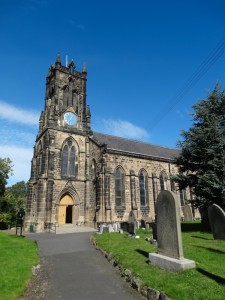 The church is dedicated to St Alban’s as the Priory of Tynemouth was established by monks from the Benedictine monastery at St Alban’s. In 1250 AD there is a written record that the Vicar of the Mother Church was ordered to “provide a chaplain and clerk to serve daily in the chapel of Earsdon, and to find them lodging, procure wine, lights, vestments and vessels for the chapel and sustain all ordinary charges.” The original chapel was a plain structure without aisles, transepts or tower. It seated about 200 people, and there were plans in 1837 to build a new one. Money was given by the Duke of Northumberland and by the owners of the collieries at Backworth, Earsdon and Holywell, and this new one seated 600. The architects were John and Benjamin Green of Newcastle, who were building Sugley in the same year. It was consecrated on 12 October 1837.
The church is dedicated to St Alban’s as the Priory of Tynemouth was established by monks from the Benedictine monastery at St Alban’s. In 1250 AD there is a written record that the Vicar of the Mother Church was ordered to “provide a chaplain and clerk to serve daily in the chapel of Earsdon, and to find them lodging, procure wine, lights, vestments and vessels for the chapel and sustain all ordinary charges.” The original chapel was a plain structure without aisles, transepts or tower. It seated about 200 people, and there were plans in 1837 to build a new one. Money was given by the Duke of Northumberland and by the owners of the collieries at Backworth, Earsdon and Holywell, and this new one seated 600. The architects were John and Benjamin Green of Newcastle, who were building Sugley in the same year. It was consecrated on 12 October 1837.
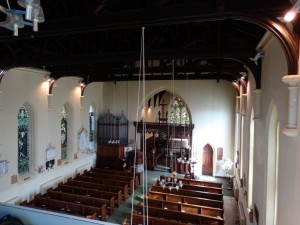 The Rood Screen was installed in 1910, as was the organ. This was built by the firm of Blackett & Howden of Heaton. It cost £612, but they got £82 back on the old one! “The bellows to be of ample size to ensure a steady supply of wind to the full organ and to be constructed of substantial material and strongly framed with ribs to be leathered with best sheep skin”.
The Rood Screen was installed in 1910, as was the organ. This was built by the firm of Blackett & Howden of Heaton. It cost £612, but they got £82 back on the old one! “The bellows to be of ample size to ensure a steady supply of wind to the full organ and to be constructed of substantial material and strongly framed with ribs to be leathered with best sheep skin”.
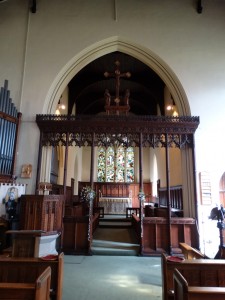
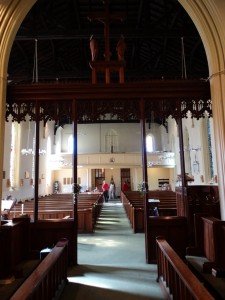
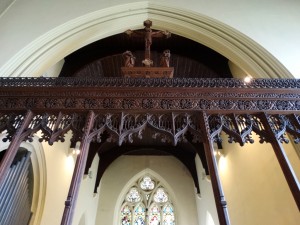 Some nice woodwork in the chancel, and the altar frontal is rather lovely as well. I like the miners’ lamp used as a sanctuary lamp. Some of the modern wood is by Robert “Mousey” Thompson – there is a good website about his work. I like the stations of the Cross as well, but don’t know who carved them.
Some nice woodwork in the chancel, and the altar frontal is rather lovely as well. I like the miners’ lamp used as a sanctuary lamp. Some of the modern wood is by Robert “Mousey” Thompson – there is a good website about his work. I like the stations of the Cross as well, but don’t know who carved them.
There are lots of names from the World Wars – interesting that WW1 finished in 1920, and this memorial tablet to a railway and mining engineer – a quick google doesn’t find him.
There is some impressive stained glass in church. At the east end of the nave are two Tudor windows, both presented by Lord Hastings of Delavel Hall in 1874. They are believed to have been made by Galyon Hone in 1531 for Hampton Court, and were removed when Henry VIII got rid of Anne Boleyn. The Hastings family acquired them. They display the Royal Arms of England (Henry VII and Henry VIII) and of France. The glass was restored and reset by Leonard Evetts in 1958. He noted that the shields of arms, garter, crown and motto are the same for each king, but Henry VII’s supporters are a dragon and a greyhound, while Henry VIII has a lion and a dragon. Apparently the impaled roses (each side of the Crown) of Lancaster and York would normally be made of two semi-circles, one bearing half a Lancaster rose and the other half a York rose. Instead whole roses of the respective houses were painted and fired, and afterwards cut vertically into two halves. So now you know! Galyon Hone’s work is also in King’s College Chapel and at Eton.
I can’t find out about these windows – the angels with red wings are rather special.
The newest windows are in the gallery – and it was a bit of a climb to see them. There were made by Cate Watkinson and commemorate the New Hartley Pit Disaster, of 16 January 1862. This was one of the greatest mining disasters in the history of Britain’s coalfields. 204 men and boys were lost when the giant beam of the pumping engine snapped and twenty tons of cast iron hurtled down the only shaft, blocking all attempts at rescue for several vital days. Most of the deaths were caused by a build up of gas in the mines workings. The funeral that followed on January 26 was remembered for generations – for despite the fact that a few bodies were taken to Cramlington, Cowpen and Seghill for burial, most were buried together in this churchyard. It is said that the last coffin had not left New Hartley when the first was reaching the churchyard, thronged by 60,000 people who had come to stare or to mourn. There is a good piece about the disaster here, and about the window here. You can see how the shape of the mine is bought into the window, and each dot represents a life lost.
The Memorial to the dead stands in the churchyard. What hit me was the age of some of those who died. We forget the cost of coal. They are various, quite moving, tributes on youtube.
A church visit to make me think and remember.

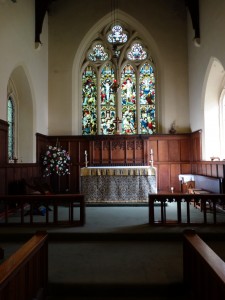
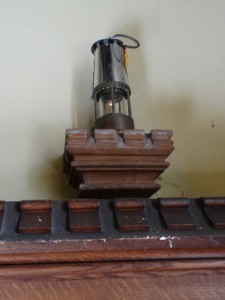
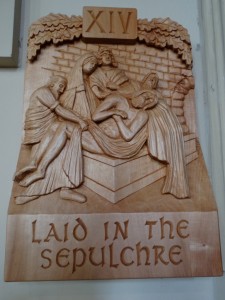
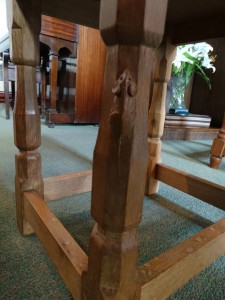
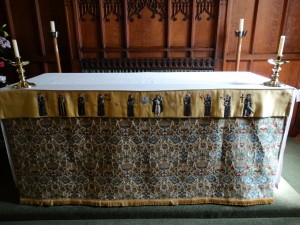
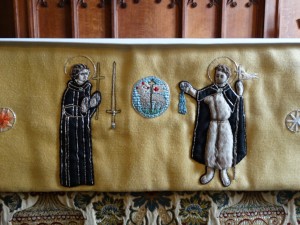
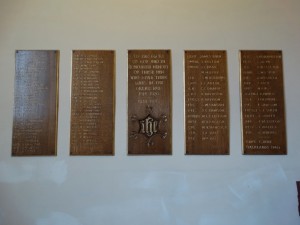
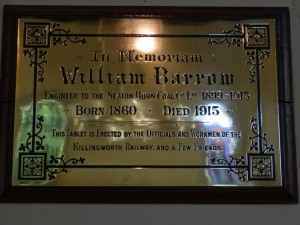
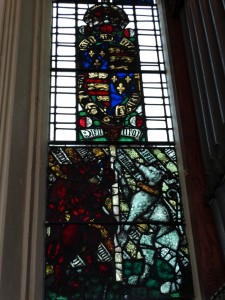
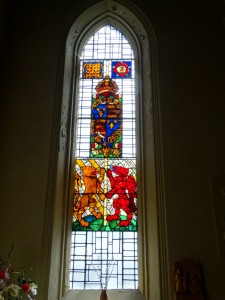
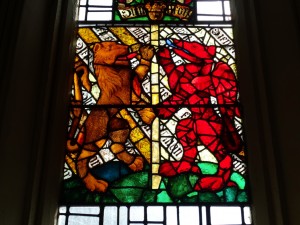
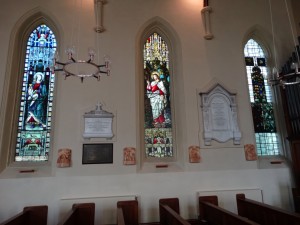
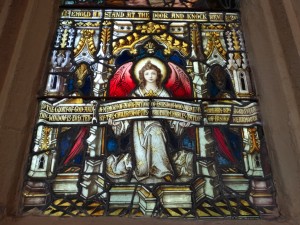
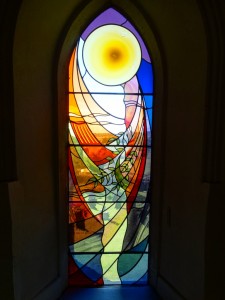
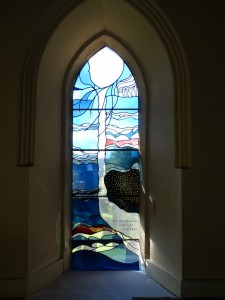
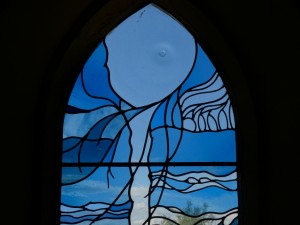
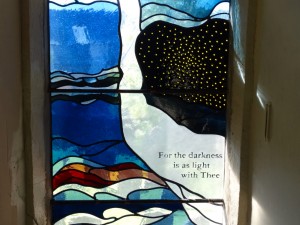
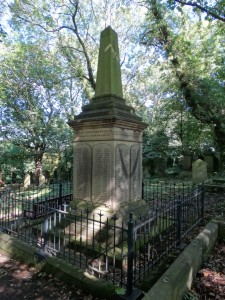
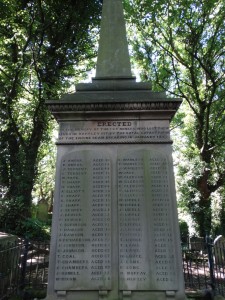
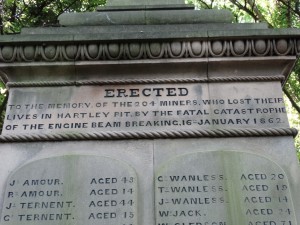
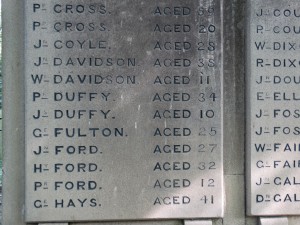
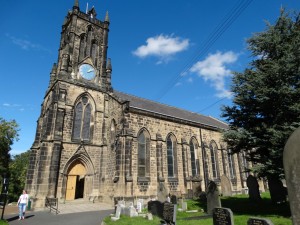
I do enjoy your blog, indeed. I have given the link to friends on FB – if I am 22 and French, my friends are mostly British, over 50, and a small group!
Of course, we have these war memorials in France with long lists for the dead of WWI. In small villages, it seems that almost the whole male population has been killed. But I find it particularly touching in Britain when the age is mentioned: so many young men…
Interesting the sanctuary lamp and the new stained glass windows.
The churches of your blog are living buildings and not museums. Lots of French RC churches are kept by the State (not to enter into administrative details) but they are mostly open for visitors but remain without services any more.
dear sir or madam i was up for leicestershire with my family last weekend looking for my grandmas grave mrs annie tudor born 1909 to 1946 ? we looked but it was impossible to get under the trees for weeds and grass could you please help we do have family at dudly thank you yours sinserly mrs a sparrow
Sorry, I just visit churches. I’m not the Vicar of Earsdon. You’ll need to get in touch with the Vicar – but do remember the difficulty of maintaining a large graveyard when you’ve only got a few people in the congregation. Peter